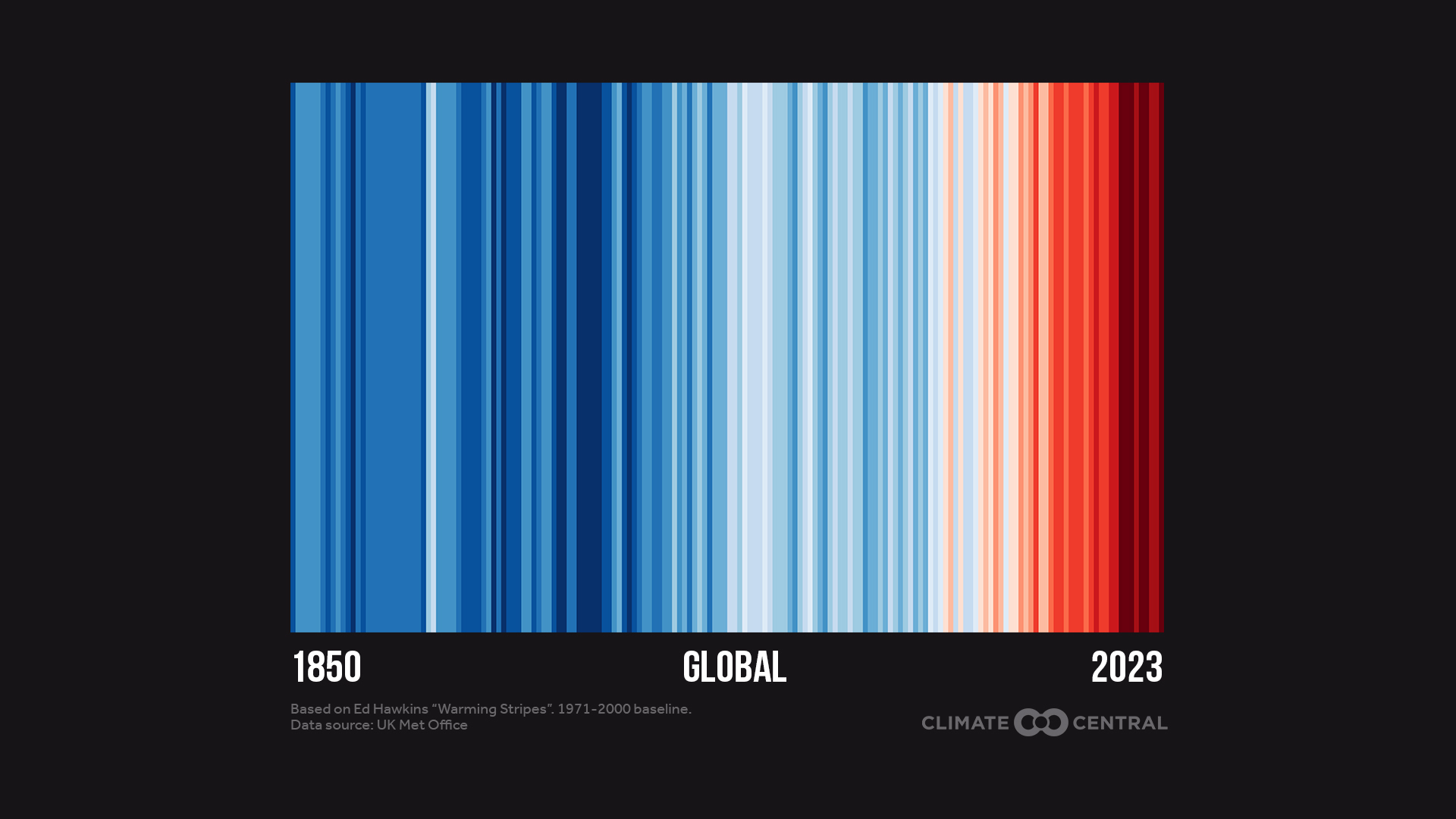
An increasingly popular graphic representation of global warming, “climate stripes” show the earth’s warming climate from blue (cooler) to red (warmer) average yearly temperatures. U.K. climatologist Ed Hawkins devised the data visualization system in 2016. Climate Central (Source: U.K. Met Office)
It happened across the entire planet — in North and Central and South America, Africa, Europe and Asia. It was evident in the oceans. In both polar regions. And in specific places like Texas.
In terms of the weather and climate records that were shattered as global warming progresses, 2023 was a whopper of a year. Scientists recorded and reacted to it all with amazement and worry.
Comments by Sarah Kapnick, chief scientist of the National Oceanic and Atmospheric Administration, were typical when NOAA said it had determined officially that 2023 was Earth’s warmest year on record. Scientists separately reached that conclusion at institutions including NASA, the World Meteorological Organization and Europe’s Copernicus Climate Change Service.
“After seeing (NOAA’s) 2023 climate analysis, I have to pause and say that the findings are astounding,” Kapnick said last month. “Not only was 2023 the warmest year in NOAA’s 174-year climate record — it was the warmest by far. A warming planet means we need to be prepared for the impacts of climate change that are happening here and now, like extreme weather events that become both more frequent and severe.”
Samantha Burgess, deputy director of Copernicus, situated last year’s heat in a much longer timeframe to do justice to how extreme it was: “2023 was an exceptional year, with climate records tumbling like dominoes. Not only is 2023 the warmest year on record, it is also the first year with all days over 1 degree C warmer than the pre-industrial period. Temperatures during 2023 likely exceed those of any period in at least the last 100,000 years.”
More and more record-demolishing — some of it maybe happening this year — is expected as greenhouse gases continue to disrupt and shape the climate. Before 2023’s conditions and events slip out of near-term memory, here’s an overview of some of the new records that were set last year to help understand how profound and far-reaching that process now is.
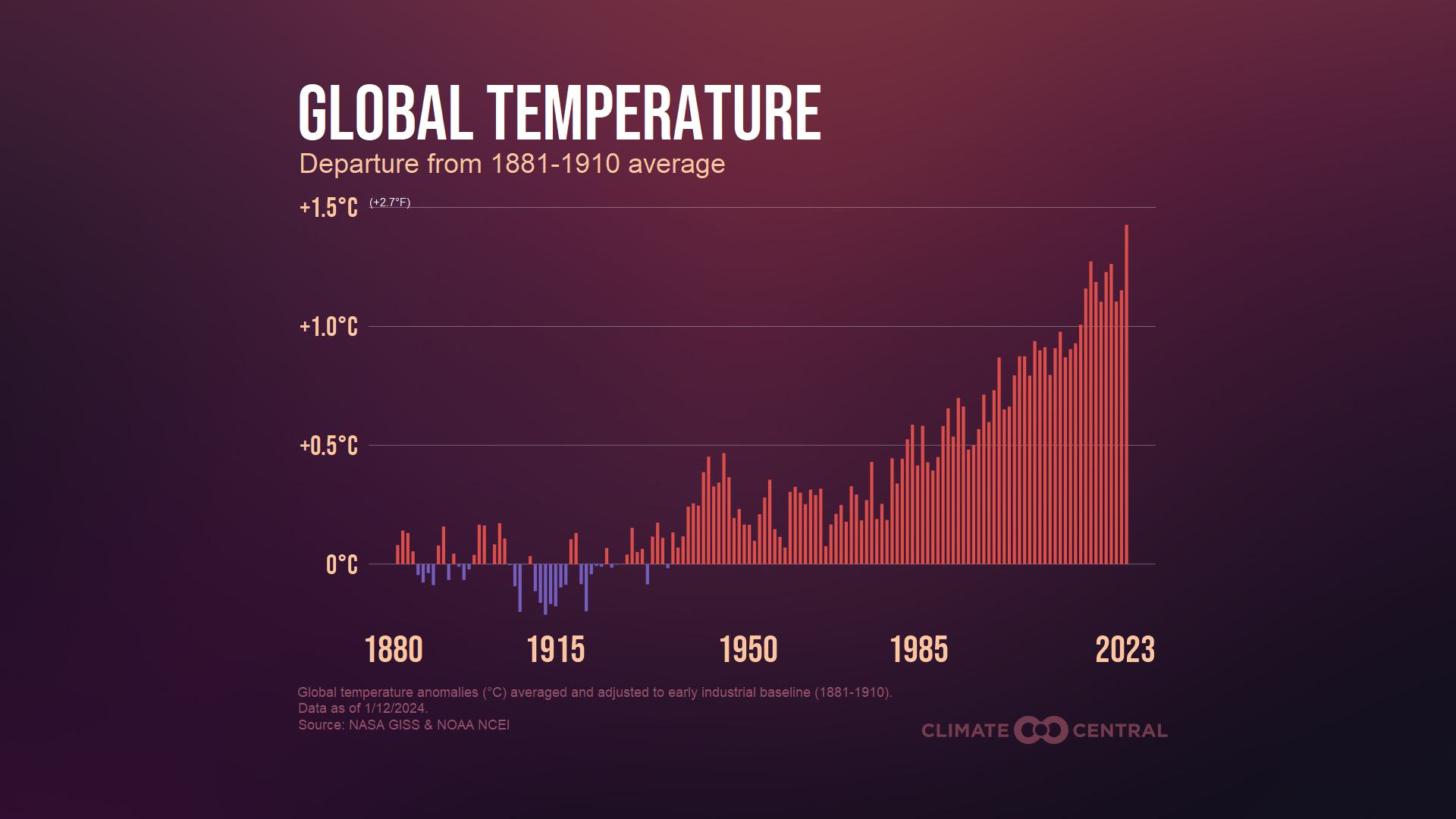
Earth’s average temperature has been on an upward path for the last half-century. Climate Central (Sources: NASA and NOAA)
Worldwide
As Axios noted when Copernicus released its 2023 conclusions on Jan. 9, the planetary average temperature for the entire year “crushed 2016,” the previous record-warm year in the service’s data set. Other new heat records, some set “by staggering margins,” were recorded in different periods and months, Copernicus said.
Scientists at several institutions had concluded a few months earlier that the summer of 2023 was the hottest June-August period on record. NASA said in September: “This new record comes as exceptional heat swept across much of the world, exacerbating deadly wildfires in Canada and Hawaii, and searing heat waves in South America, Japan, Europe, and the U.S., while likely contributing to severe rainfall in Italy, Greece, and Central Europe.”
Besides officially ending as “Earth’s warmest year since 1880,” 2023 capped a record-setting decade – “the last 10 consecutive years have been the warmest 10 on record,” NASA said last month.
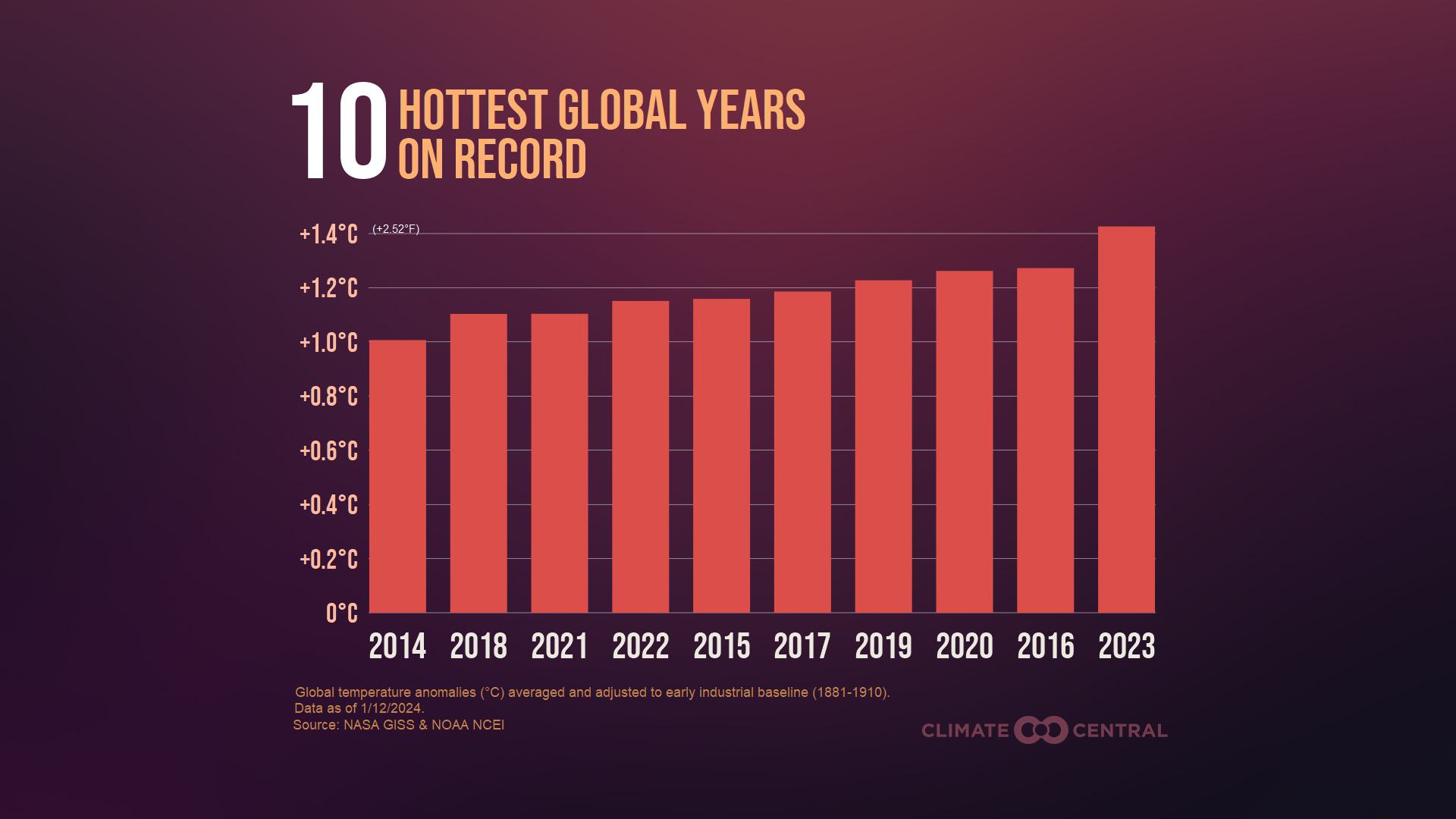
The last 10 years – 2014 through 2023 have been the 10 hottest on record. Climate Central (Sources: NASA and NOAA)
Texas
As was the case worldwide, 2023 was the hottest year on record in Texas, breaking the previous record for average year-long warmth established in 2012.
Since 2000, each year has been warmer in Texas than the average during the last century, John Nielsen-Gammon, the Texas state climatologist and a regents professor of atmospheric sciences at Texas A&M University, told The Texas Tribune. Climate change is causing “that consistent warmth,” he said.
Besides having its warmest year on record last year, Texas had its hottest summer.
But as human-caused climate warming continues, “2023 will end up being one of the coldest years of this century,” Nielsen-Gammon’s A&M colleague in atmospheric sciences, Andrew Dessler, told The Guardian. “Enjoy it while it lasts.”
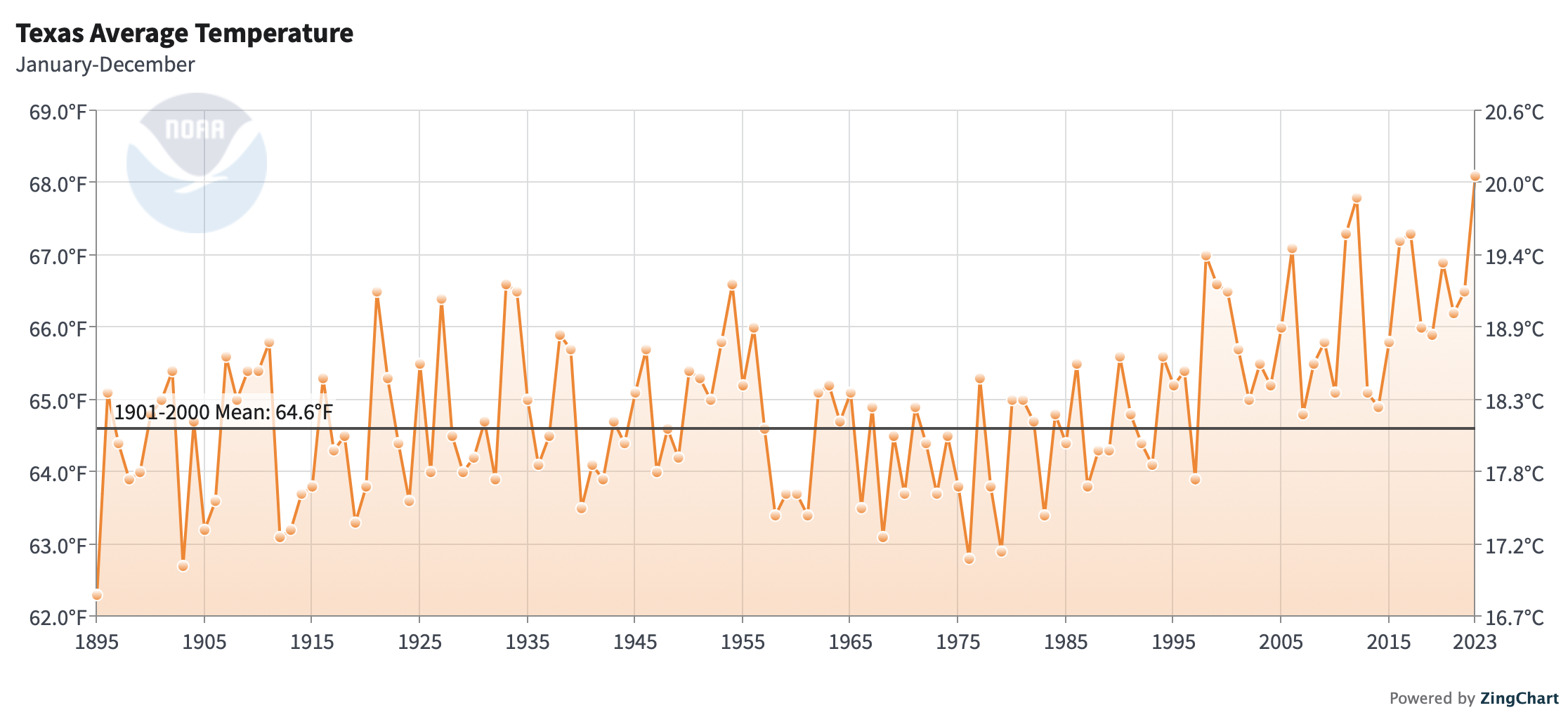
Average yearly temperatures in Texas from 1895 through 2013. NOAA
Disasters
Across the 48 contiguous states, the U.S. experienced its fifth warmest year in records dating to 1895, according to NOAA. Along with Texas, four other states – Louisiana, Mississippi, Massachusetts and New Hampshire – had their warmest years in 2023, while 32 states had average temperatures “much above average.”
That far-reaching heat was key to the setting of a new 48-state record for the number of weather disasters with financial impacts of $1 billion or higher.
Yale Climate Connections reported: “Led by a record-costly swarm of severe weather episodes, the contiguous United States suffered 28 billion-dollar weather disasters in 2023, the highest number in inflation-adjusted data going back to 1980, according to NOAA. The former record was 22, set in 2020.”
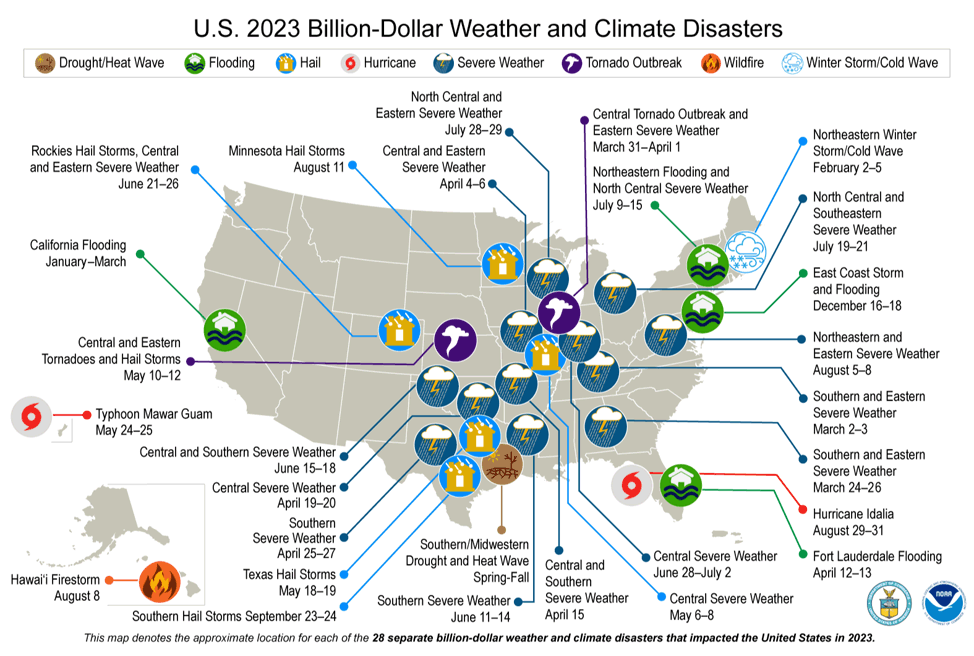
NOAA
Worldwide, 2023 was likewise a record-setting year for weather disasters, with 63 billion-dollar events eclipsing the previous global record of 57 in 2020, according to insurance broker Gallagher Re.
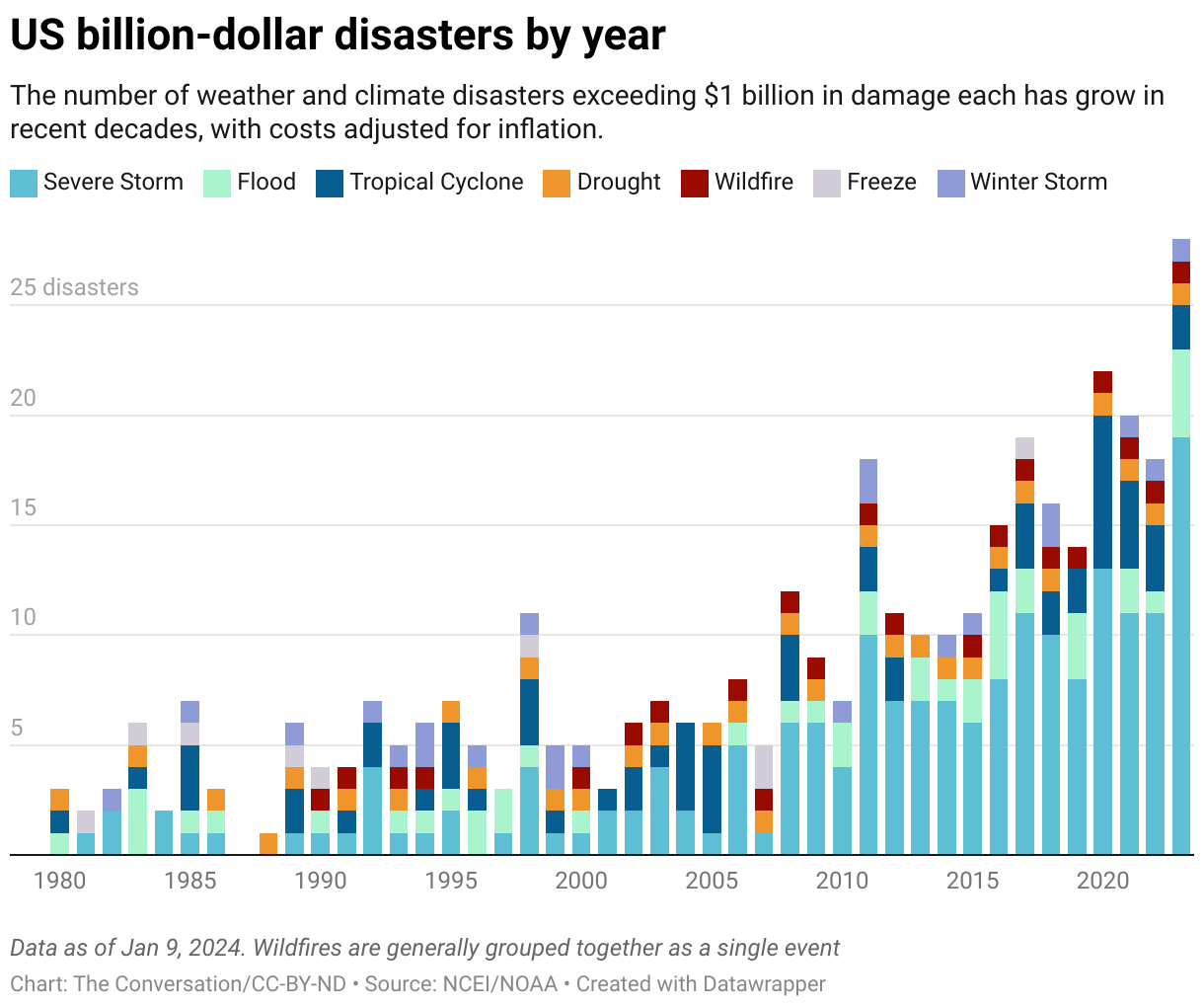
The Conversation (Source: NOAA)
Oceans
About 90 percent of the excess atmospheric heat trapped by greenhouse gases from fossil-fuel use is absorbed in the earth’s oceans. Scientists say this heating of the oceans contributes to increasing hazards from rising sea levels and more intense and dangerous hurricanes and other tropical storms.
After setting a statistical track that zigzagged up and down for the past few years, the average temperature at the ocean surface around the world jumped to its highest level on record in 2023.
This marked “the first year with an ocean average above 1.0 degree C and beats the previous record set in 2020 by a very large margin, 0.16 C (0.29 F),” according to the nonprofit research center Berkeley Earth.
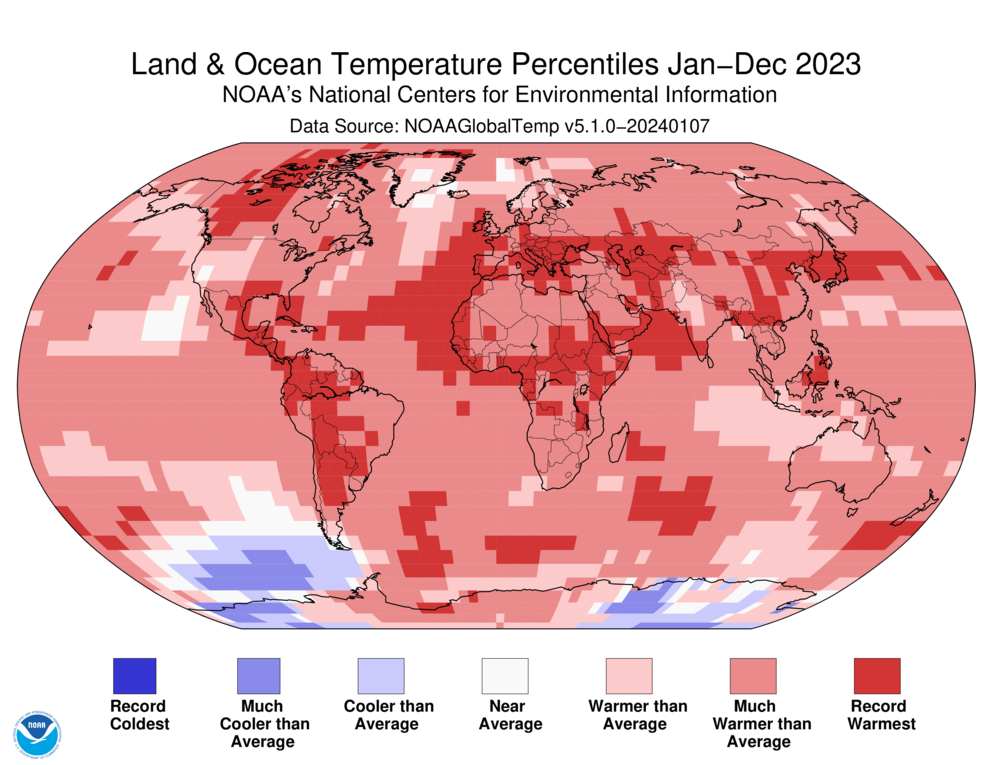
As with the earth’s land surface in 2023, most of the ocean surface also experienced record-warm or much higher than average temperatures. NOAA
NOAA’s 2023 review noted that there has been “a steady upward trend” in global ocean-heat content since about 1970, with the five highest values all measured in the last five years.
The annual extent of Antarctic sea ice was the lowest on record, NOAA reported, while Arctic ice coverage was among the 10 lowest years on record for that region.
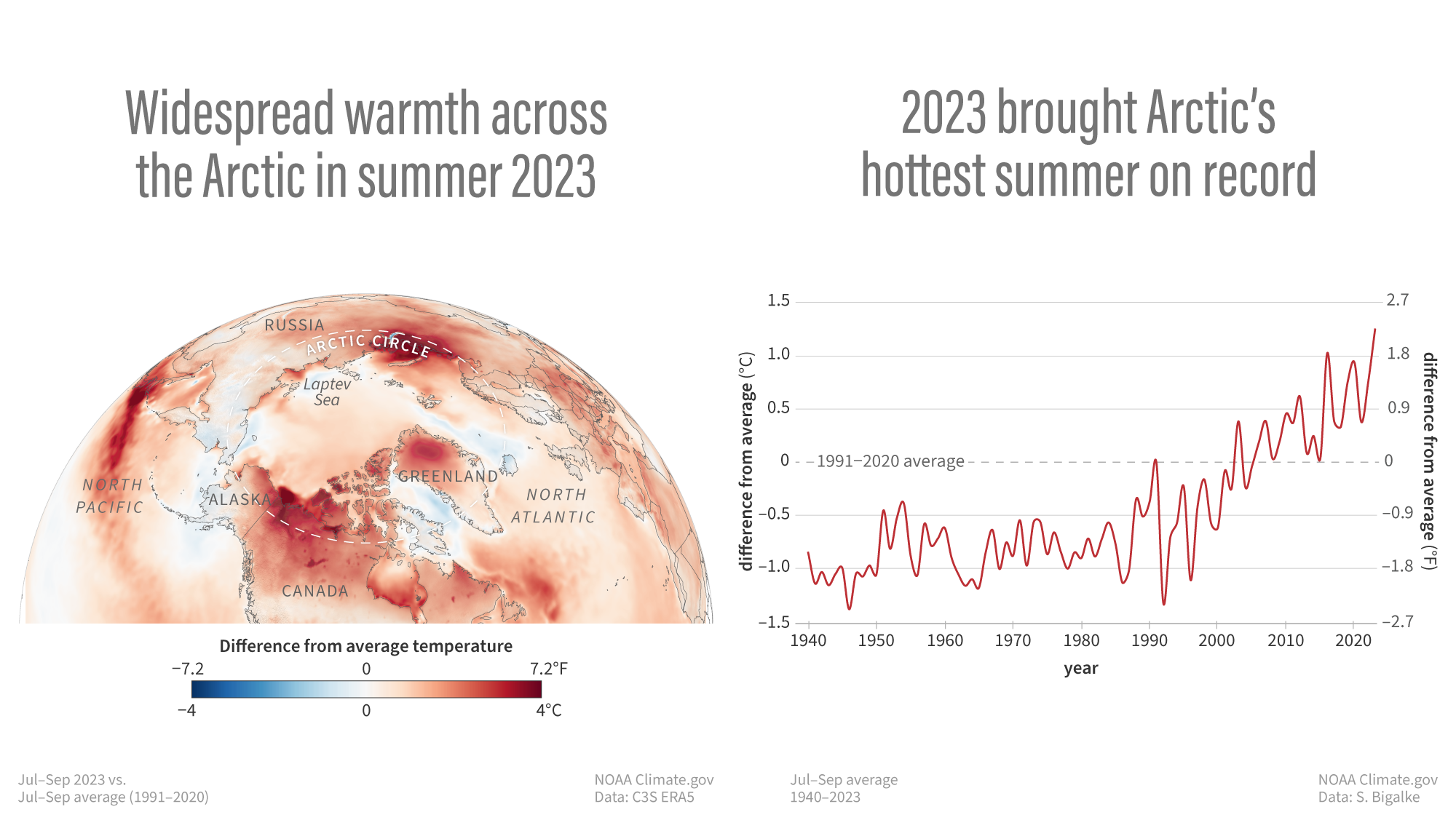
NOAA
Authors of a new study found that surface temperatures were “off the charts” across the oceans in 2023, with an “astounding” jump in the second half of the year, The Guardian reported last month.
An international research consortium, Global Water Monitor, separately “found some of the worst disasters of 2023 were due to unusually strong cyclones bringing extreme rainfall to Mozambique and Malawi, Myanmar, Greece, Libya, New Zealand and Australia,” the same Guardian article reported.
2024
An El Niño phase of the natural climate pattern called ENSO added to the impacts of human-caused climate change to help produce last year’s record heat, scientists say.
In an update in January, NOAA reported that the continuing El Niño “is very likely close to peak strength and is likely to continue for the next few months, while gradually weakening.” Despite that expected waning, “impacts to global climate will continue for the next few months,” the agency said.
So what does that mean for 2024’s temperatures and other climate phenomena? And for the possible breaking of some of last year’s records?
NOAA addressed those questions in its year-end analysis of 2023 statistics:
“The 10 warmest years since 1850 have all occurred in the past decade. In fact, the average global temperature for 2023 exceeded the pre-industrial (1850–1900) average by 2.43 degrees F (1.35 degrees C).
“Looking ahead, there is a one-in-three chance that 2024 will be warmer than 2023, and a 99% chance that 2024 will rank among the top five warmest years.”
Bill Dawson is the founding editor of Texas Climate News.
John Nielsen-Gammon is a member of TCN’s volunteer Advisory Board. Members have no authority over our editorial decisions.
